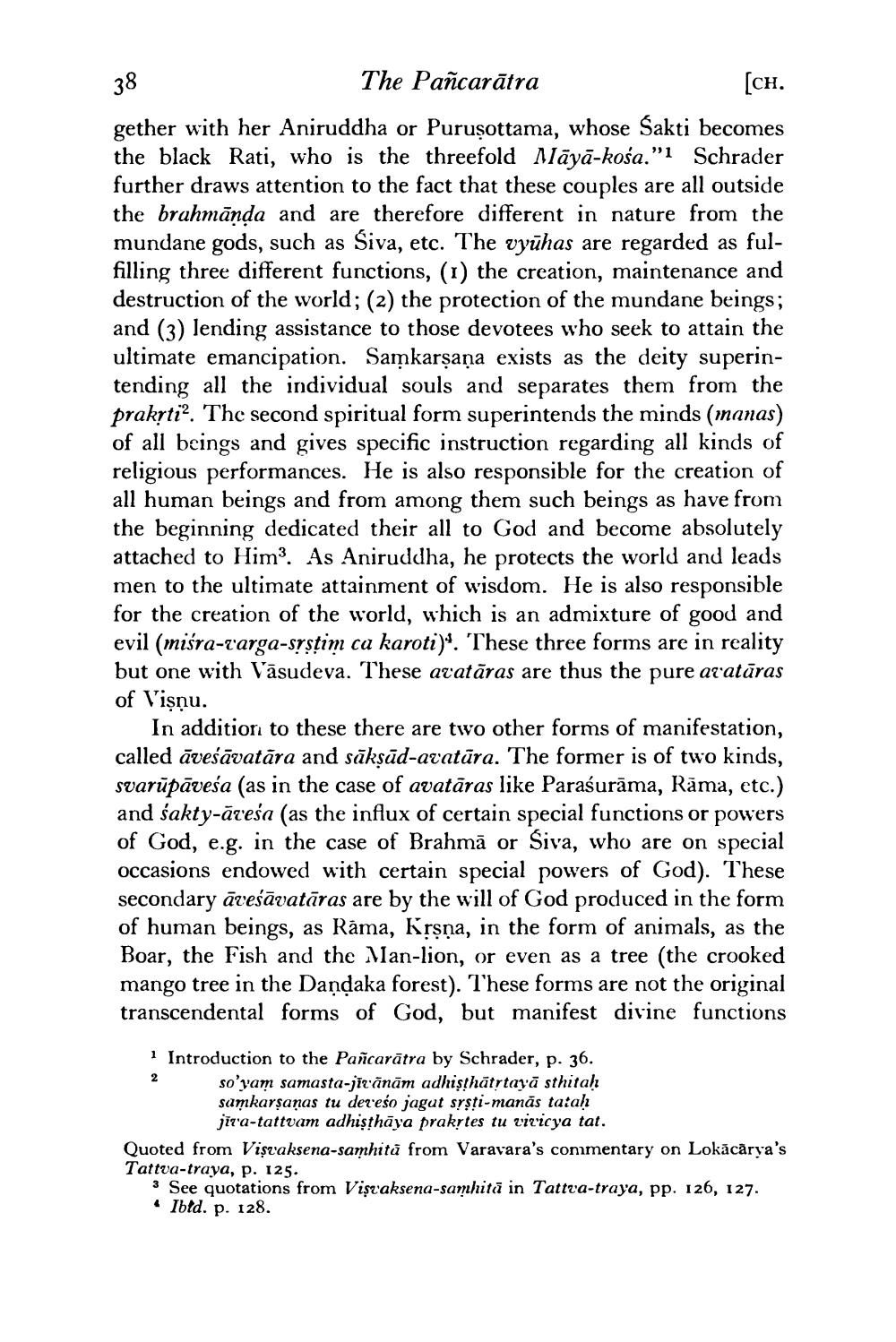________________
38
The Pañcarātra
[ch. gether with her Aniruddha or Purusottama, whose Sakti becomes the black Rati, who is the threefold Mlāyā-kośa."i Schrader further draws attention to the fact that these couples are all outside the brahmānda and are therefore different in nature from the mundane gods, such as Siva, etc. The vyūhas are regarded as fulfilling three different functions, (1) the creation, maintenance and destruction of the world; (2) the protection of the mundane beings; and (3) lending assistance to those devotees who seek to attain the ultimate emancipation. Samkarşaņa exists as the deity superintending all the individual souls and separates them from the prakrti2. The second spiritual form superintends the minds (manas) of all beings and gives specific instruction regarding all kinds of religious performances. He is also responsible for the creation of all human beings and from among them such beings as have from the beginning dedicated their all to God and become absolutely attached to Him?. As Aniruddha, he protects the world and leads men to the ultimate attainment of wisdom. He is also responsible for the creation of the world, which is an admixture of good and evil (mišra-carga-systim ca karoti)". These three forms are in reality but one with Vāsudeva. These aratăras are thus the pure aratūras of Vişnu.
In addition to these there are two other forms of manifestation, called āvešāvatāra and sāksād-avatāra. The former is of two kinds, svarūpāvesa (as in the case of avatāras like Paraśurāma, Rāma, etc.) and sakty-āreśa (as the influx of certain special functions or powers of God, e.g. in the case of Brahmā or Siva, who are on special occasions endowed with certain special powers of God). These secondary āveśāvatāras are by the will of God produced in the form of human beings, as Rama, Krsna, in the form of animals, as the Boar, the Fish and the Man-lion, or even as a tree (the crooked mango tree in the Dandaka forest). These forms are not the original transcendental forms of God, but manifest divine functions
1 Introduction to the Pancarātra by Schrader, p. 36.
so'yam samasta-jirānām adhisthätytayā sthitah samkarşanas tu derešo jagut srsti-manās tatah
jira-tattvam adhisthāya prakrtes tu vilicya tat. Quoted from Visvaksena-samhită from Varavara's commentary on Lokācārya's Tattva-traya, p. 125.
3 See quotations from Vistaksena-samhita in Tattva-traya, pp. 126, 127. • Ibtd. p. 128.




